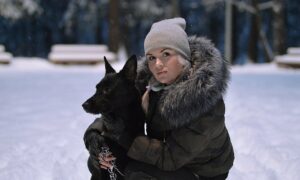3 Serious Canines Conditions

The following 3 conditions are serious illnesses that may happen to a dog. If you notice any of these symptoms or are worried your dog may be afflicted with one of these it is important that you give us a call and bring your dog to the Vet immediately!
Canine Infectious Hepatitis
Canine Infectious Hepatitis is an acute liver infection cause by Canine Adenovirus Type 1 (CAV1). The virus affects wolves, coyotes, bears and foxes. CAV1 is spread by the feces, urine, blood, and saliva of affected animals.
Symptoms include:
- corneal swelling (blue eye)
- Fever
- loss of appetite
- jaundice
- liver failure
- Severe cases develop bleeding disorders and even hematomas in the mouth. Dogs can recover, but corneal edema (swelling) and kidney issues may persist.
There is only symptomatic and supportive treatment. Canine infectious Hepatitis is destroyed in the environment by steam cleaning and bleach. The virus can survive in the environment for months, and can be released in the urine of a recovered animal for a year. Canine Adenovirus Type 2 (CAV2) causes respiratory illness in dogs, but is so similar to CAV1 that a modified version of CAV2 is in our vaccines, since it creates immunity for both diseases.
Canine Parainfluenza
Parainfluenza is a highly contagious respiratory virus that causes tracheobronchitis. This virus spreads rapidly through kennels and the symptoms are so similar to those caused by Bordetella that canine Parainfluenza is considered to be a cause of “kennel cough”. It is spread by contact with the nasal secretions of infected dogs, especially airborne particles and droplets.
The symptoms of Parainfluenza include a dry or a wet cough, low-grade fever, nasal discharge, lethargy and loss of appetite. A dog can still contract Parainfluenza even after vaccination, but the symptoms are usually mild, and a vaccinated dog can become ill if exposed to a mutated strain.
Parainfluenza viruses last only a few hours in the environment, and are inactivated by soap and water, as well as by common detergents, disinfectants, and antiseptics. Canine Parainfluenza is NOT related to Canine Influenza and there are separate vaccines to immunize for both. Canine influenza is a relatively new virus caused by the H3N8 strain of influenza, and most dogs have never been exposed or vaccinated. Virtually every dog exposed to this virus will become infected.
Canine influenza is easily confused with kennel cough when the symptoms are mild. Severe disease usually affects the very young or very old. Severe disease symptoms include high fever of 104-106, an increased respiratory rate, and signs of hemorrhagic pneumonia.
Canine Parvovirus
Canine parvovirus is an acute, highly contagious disease of dogs that was first described in the early 1970s. The virus has a tendency to attack rapidly reproducing cells, such as those lining the gastrointestinal tract.
The virus is shed in large amounts in the stools of acutely infected dogs for up to several weeks following infection. The disease is transmitted by oral contact with infected feces. Parvo can be carried on the dog’s hair and feet, as well as on contaminated crates, shoes, and other objects. When the dog licks the fecal material off hair, feet, or anything that came in contact with infected feces, he acquires the disease.
Parvo affects dogs of all ages, but most cases occur in puppies 6 to 20 weeks of age. Doberman Pinschers, Pit Bulls, Rottweilers, and mixes of these breeds appear to acquire the infection more readily and experience more severe symptoms. The reason for lower resistance in these breeds is unknown.
Following an incubation period that averages four to five days, the acute illness begins with depression, vomiting, and diarrhea. Some dogs have no fever, while others have high fever (up to 106°F, 41.1°C). Pups with severe abdominal pain exhibit a tucked-up abdomen. Diarrhea is profuse and contains mucus and/or blood. Dehydration develops rapidly.
Heart muscle involvement in neonatal puppies used to be common, but is now rarer. This is because routine vaccination of breeding females two to four weeks before breeding boosts maternal antibody levels and provides better protection for puppies. However, there are many unvaccinated breeding dogs in shelter/stray situations, and cardiac involvement in these puppies still occurs
Treatment for dogs with this disease requires intensive veterinary management. In all but the mildest cases, hospitalization is essential to correct dehydration and electrolyte imbalances. Intravenous fluids and medications to control vomiting and diarrhea are required. More severe cases may require blood plasma transfusions and other intensive care.
Puppies and dogs should not eat or drink until the vomiting has stopped. but require fluid support during that time. This can take three to five days. Antibiotics are prescribed to prevent septicemia and other bacterial complications, which are the usual cause of death.
The outcome depends upon the virulence of the specific strain of parvovirus, the age and immune status of the dog, and how quickly the treatment is started. Most pups who are under good veterinary care recover without complications.
To help prevent the spread of parvo, thoroughly clean and disinfect the quarters of infected animals. Parvo is an extremely hardy virus that resists most household cleaners and survives on the premises for months. The most effective disinfectant is household bleach in a 1:32 dilution. The bleach must be left on the contaminated surface for 20 minutes before being rinsed.
Vaccination starting by 8 weeks of age, will prevent most (but not all) cases of parvovirus infection. During the first weeks of life, puppies are protected by high levels of maternal antibodies. As these levels decline, there is a period lasting from two to four weeks during which puppies are susceptible to infection because vaccinations have not yet fully taken effect. This susceptible period varies from pup to pup, which is why pups anywhere between 6 and 20 weeks age can be especially susceptible to parvo. Nearly all apparent vaccination failures are due to exposure during this susceptible period.
It is important to isolate young puppies as much as possible from other dogs and from potential sources of infection until they complete the parvo vaccination series at 16 weeks of age. Currently, recommendations are for a booster a year from the initial vaccine series and then revaccination every three years.





